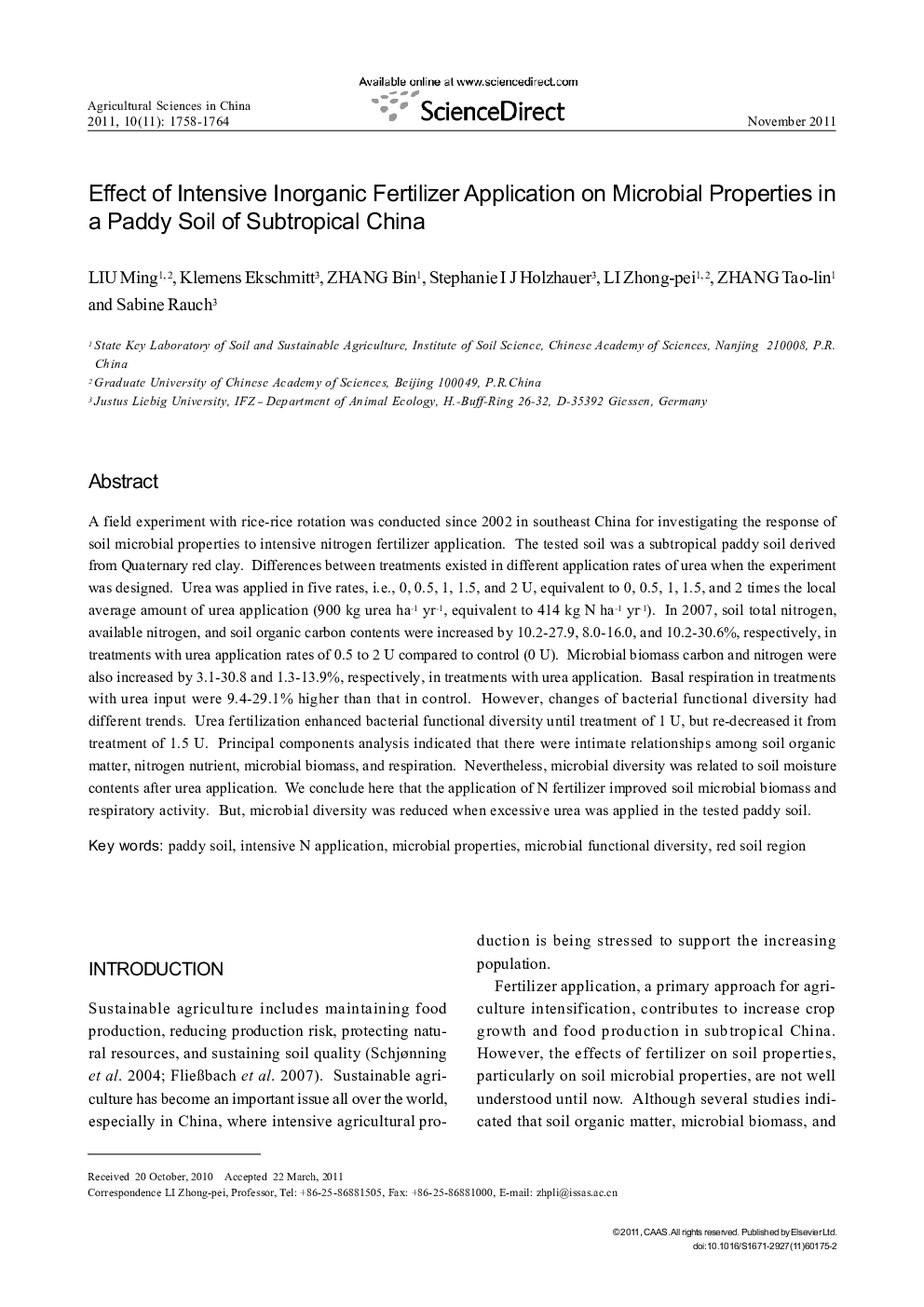| Article ID | Journal | Published Year | Pages | File Type |
|---|---|---|---|---|
| 4489827 | Agricultural Sciences in China | 2011 | 7 Pages |
A field experiment with rice-rice rotation was conducted since 2002 in southeast China for investigating the response of soil microbial properties to intensive nitrogen fertilizer application. The tested soil was a subtropical paddy soil derived from Quaternary red clay. Differences between treatments existed in different application rates of urea when the experiment was designed. Urea was applied in five rates, i.e., 0, 0.5, 1, 1.5, and 2 U, equivalent to 0, 0.5, 1, 1.5, and 2 times the local average amount of urea application (900 kg urea ha−1 yr−1, equivalent to 414 kg N ha−1 yr−1). In 2007, soil total nitrogen, available nitrogen, and soil organic carbon contents were increased by 10.2–27.9, 8.0–16.0, and 10.2–30.6%, respectively, in treatments with urea application rates of 0.5 to 2 U compared to control (0 U). Microbial biomass carbon and nitrogen were also increased by 3.1–30.8 and 1.3–13.9%, respectively, in treatments with urea application. Basal respiration in treatments with urea input were 9.4–29.1% higher than that in control. However, changes of bacterial functional diversity had different trends. Urea fertilization enhanced bacterial functional diversity until treatment of 1 U, but re-decreased it from treatment of 1.5 U. Principal components analysis indicated that there were intimate relationships among soil organic matter, nitrogen nutrient, microbial biomass, and respiration. Nevertheless, microbial diversity was related to soil moisture contents after urea application. We conclude here that the application of N fertilizer improved soil microbial biomass and respiratory activity. But, microbial diversity was reduced when excessive urea was applied in the tested paddy soil.
